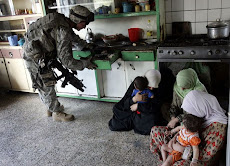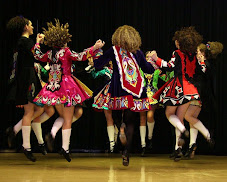
 Mar. 23: (Washington Post) - Boubacar Messaoud remembered strolling from the flatlands of Mauritania toward the southern town of Rosso, a watermelon poised on his head. Beyond a riverbank, he could see a row of children in a yard. Messaoud, then 7, stopped to find out what was going on, with the pure curiosity of a child. He found out that the children were being signed up for school. Messaoud, the son of slaves who toiled in the fields of landowners, recalled that he was still unaware of the privations separating him from others. Among a knot of parents, Messaoud noticed the cousin of his family's owner and asked him to help him enroll, too. "I can't," the man replied. "What will your master say?" Messaoud put down his watermelon and cried.
Mar. 23: (Washington Post) - Boubacar Messaoud remembered strolling from the flatlands of Mauritania toward the southern town of Rosso, a watermelon poised on his head. Beyond a riverbank, he could see a row of children in a yard. Messaoud, then 7, stopped to find out what was going on, with the pure curiosity of a child. He found out that the children were being signed up for school. Messaoud, the son of slaves who toiled in the fields of landowners, recalled that he was still unaware of the privations separating him from others. Among a knot of parents, Messaoud noticed the cousin of his family's owner and asked him to help him enroll, too. "I can't," the man replied. "What will your master say?" Messaoud put down his watermelon and cried. The ancient tradition of slavery endures in Mauritania, although it was officially abolished in the 1980s. There are roughly half a million slaves among the country's population of 3.3 million, and at least 80 percent do not have access to a formal education, Messaoud said. Many remain illiterate. Messaoud was in Washington this month to speak at the Woodrow Wilson International Center for Scholars and to lobby legislators on the issue, with assistance from the Open Society Institute, which promotes civil society and democratic institutions, and London-based Anti-Slavery International. Messaoud, who founded the anti-slavery group SOS Slaves in 1995, has waged many battles on behalf of slaves since that day more than 50 years ago when he faced his first obstacle to breaking the shackles.
The French principal inspecting the clutch of eager students outside the school asked why young Messaoud was sobbing. The principal shamed the slave master's cousin into registering Messaoud, who became the first in his family to go to school. He went on to college and became an architect with the help of scholarships and an uncle who ran a butchering business on the side after his farming chores were finished. Messaoud, 63, remembered the thrill and promise of possibility on his first day of school. "I relished the change from laboring in the fields, sowing seeds and tearing off acacia branches to build barriers fencing in the land," he said. Until then, rare childhood joys had included flopping around in the water to fish by hand. Unlike Mauritania's capital, Nouakchott, which is ringed by ribbons of desert and sand dunes, Rosso has a river running through it, cornfields and rice paddies. But Messaoud also remembered being bullied and dismissed by classmates as inferior. "When you go out in mixed society, life is hard," he said.
Slavery has been perpetuated in Mauritania by the persistence of tradition, distorted notions of religious obligation and a reluctance by some law enforcement agents to apply the law, especially in rural areas. Slaves are unaware that they are entitled to equal rights and don't know how to seek justice, so their bondage continues, Messaoud said. "A slave guiding a blind beggar in the streets of Nouakchott does it as an act of piety. He will not run away, believing his subjugation will secure him a place in paradise," he said. In fact, Islam prohibits a Muslim from enslaving other Muslims. In March 2007, Sidi Ould Cheikh Abdellahi was elected president of Mauritania after negotiating with a bloc of freed slaves and pledging to enforce new legislation criminalizing slavery. Parliament endorsed the bill, which became law in August 2007. Messaoud welcomed the president's "courageous act" but urged the world to encourage him to go further. "The new law, which is good, is just one tool for overturning an age-old social order," said Romana Cacchioli, Africa program coordinator for Anti-Slavery International. "We need affirmative action to help lift this sector of society out of the dust. They must have access to land, to microcredit, so we must invest in reversing their exclusion. We must give them the confidence to speak up against their human rights violation."
The Open Society Justice Initiative, a program working for legal reforms in the region, said in a memo that the new law failed to spell out how to stop sexual exploitation of female slaves, had not provided a mechanism to help slaves file civil actions and lacked a timetable for implementing additional measures included in it. Messaoud emphasized that programs should be funded to teach freed slaves the skills they need to work in public institutions, such as the police force. Under the still-prevalent tradition, children inherit the status of their mothers and are passed on by masters as part of dowries or shared with other family members. "The girls can join a new household at the age of 5," Messaoud said. "They become the bride's servant and confidante. They rise at dawn to make tea and leave after everyone has had breakfast to work in the fields. They collect firewood and return to prepare the evening meal, then clean up after everyone has gone to sleep." Messaoud's two aunts died in the homes they served. His mother and uncle managed lands and saw their owners only when they came to collect their share of crops, he said. Women work the fields with their babies strapped to their backs. Many girls and women flee sexual abuse by their male masters, who by tradition can "claim" their virginity. Women who escape to the city often cannot find work, and some resort to prostitution. Others return to their masters and ask for forgiveness "with heads bowed," Messaoud said.
Slaves freed by their proprietors still suffer discrimination long after their days of bondage. Though most slaves are black, owners are black or white, Messaoud said, emphasizing that slavery persists because of tradition and a socialized mind-set, not race. No regulations prohibit slaves from going to school, voting or running for office, but few do, pinned down by work and the economic and political domination of the class that owns them. Messaoud, who has been jailed three times for his activism, said slavery also persists in Niger, Senegal, Mali and other sub-Saharan African countries. He has always owned up to his roots with people he has met, "to gauge what side of the fence they were on." "I learned from an early age never to hide it," he said of his background. "Mauritanian ambassadors in Mali and Moscow, where I studied, would threaten me, accusing me of tarnishing my country's image." But, he added, "I am convinced that a society that does not look at itself in the face is condemned."
+++++++++++++++++++++++++++++++++++++++++++++++++++
Disclaimer
No responsibility or liability shall attach itself to either myself or to the blogspot ‘Mozlink’ for any or all of the articles/images placed here. The placing of an article does not necessarily imply that I agree or accept the contents of the article as being necessarily factual in theology, dogma or otherwise.
Mozlink









































































